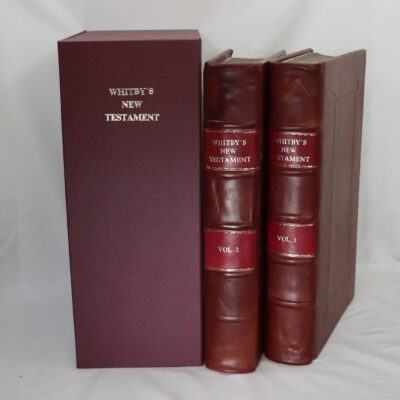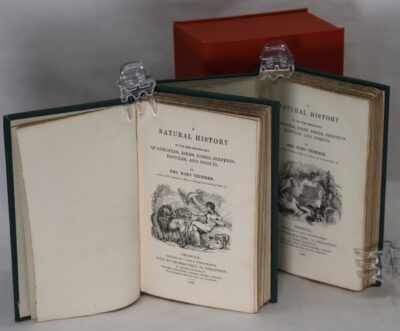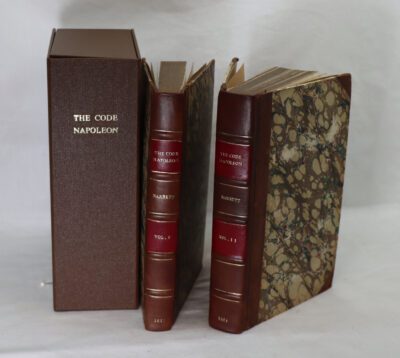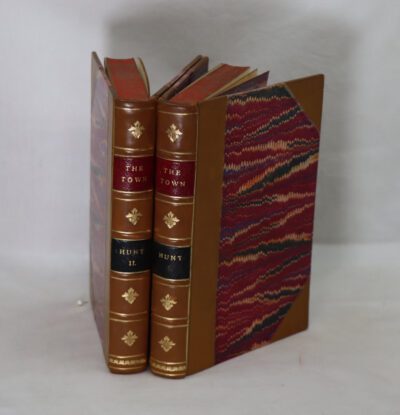Bacon's Essays. Whately.
By Richard Whately. DD
Printed: 1867
Publisher: Longmans, Green. London
| Dimensions | 15 × 22 × 4 cm |
|---|---|
| Language |
Language: English
Size (cminches): 15 x 22 x 4
Condition: Fine (See explanation of ratings)
Item information
Description
A notable edition.
Bacon’s Essays: With Annotations By Richard Whately
Essayes: Religious Meditations. Places of Perswasion and Disswasion. Seene and Allowed (1597) was the first published book bythe philosopher, statesman and jurist Francis Bacon. The Essays are written in a wide range of styles, from the plain and unadorned to the epigrammatic. They cover topics drawn from both public and private life, and in each case the essays cover their topics systematically from a number of different angles, weighing one argument against another. While the original edition included 10 essays, a much-enlarged second edition appeared in 1612 with 38. Another, under the title Essayes or Counsels, Civill and Morall, was published in 1625 with 58 essays. Translations into French and Italian appeared during Bacon’s lifetime. In Bacon’s Essay, “Of Plantations” published in 1625, he relates planting colonies to war. He states that such plantations should be governed by those with a commission or authority to exercise martial law.
Richard Whately (1 February 1787 – 8 October 1863) was an English academic, rhetorician, logician, philosopher, economist, and theologian who also served as a reforming Church of Ireland Archbishop of Dublin. He was a leading Broad Churchman, a prolific and combative author over a wide range of topics, a flamboyant character, and one of the first reviewers to recognise the talents of Jane Austen.
A member of the loose group called the Oriel Noetics, Whately supported religious liberty, civil rights, and freedom of speech for dissenters, Roman Catholics, Jews, and even atheists. He took the line that the civil disabilities imposed on non-Anglicans made the state only nominally Christian, and supported disestablishment. He was a follower of Edward Copleston, regarded as the founder of the Noetics taken as apologists for the orthodoxy of the Church of England. A devout Christian, Whately took a practical view of Christianity. He disagreed with the Evangelical party and generally favoured a more intellectual approach to religion. He also disagreed with the later Tractarian emphasis on ritual and church authority. Instead, he emphasised careful reading and understanding of the Bible
His cardinal principle was that of Chillingworth —‘the Bible, and the Bible alone, is the religion of protestants;’ and his exegesis was directed to determine the general tenor of the scriptures to the exclusion of dogmas based on isolated texts. There is no reason to question his reception of the central doctrines of the faith, though he shrank from theorising or even attempting to formulate them with precision. On election he held, broadly speaking, the Arminian view, and his antipathy to Calvinism was intense. He dwelt more on the life than on the death of Christ, the necessity of which he denied.
Whately took a view of political economy as an essentially logical subject. It proved influential in Oxford. The Noetics were reformers but largely centrist in politics, rather than strong Whigs or Tories. One of Whately’s initial acts on going to Dublin was to endow a chair of political economy in Trinity College. Its first holder was Mountifort Longfield. Later, in 1846, he founded the Dublin Statistical Society with William Neilson Hancock.
Whately’s view of political economy, and that common to the early holders of the Trinity college professorship, addressed it as a type of natural theology. He belonged to the group of supporters of Thomas Malthus that included Thomas Chalmers, some others of the Noetics, Richard Jones and William Whewell from Cambridge. He saw no inconsistency between science and Christian belief, differing in that way from some Christian critics of Malthus. He differed also from Jones and Whewell, expressing the view that the inductive method was of less use for political economy than the deductive method, properly applied.
In periodicals Whately discussed other public questions. He addressed, for example, the subject of transportation and the “secondary punishments” on those who had been transported; his pamphlet on this topic influenced the politicians Lord John Russell and Henry George Grey.
Whately was an important figure in the revival of Aristotelian logic in the early nineteenth century. The Elements of Logic gave an impetus to the study of logic in Britain, and n the United States of America, logician Charles Sanders Peirce (1839–1914) wrote that his lifelong fascination with logic began when he read Whately’s Elements as a 12-year-old boy.
Whately’s view of rhetoric as essentially a method for persuasion became an orthodoxy, challenged in mid-century by Henry Noble Day. Elements of Rhetoric is still cited, for thought about presumption, burden of proof, and testimony.
In 1864 Jane Whately, his daughter, published Miscellaneous Remains from his commonplace book and in 1866 his Life and Correspondence in two volumes. The Anecdotal Memoirs of Archbishop Whately, by William John Fitzpatrick, was published in 1864.
Want to know more about this item?

Related products
Share this Page with a friend











